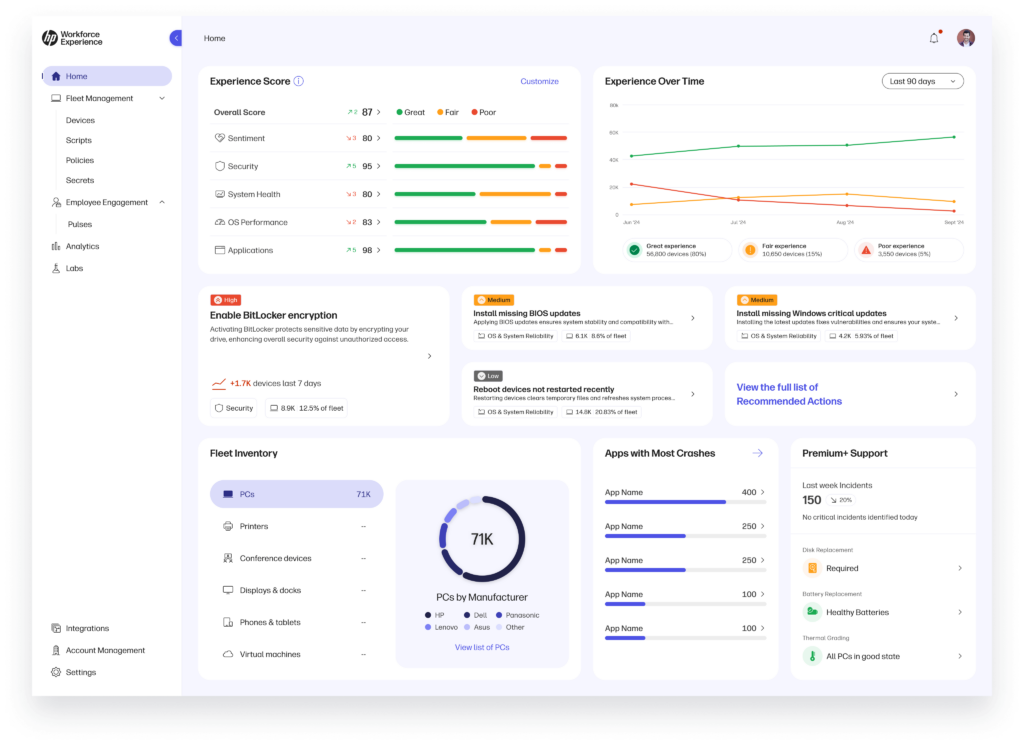Measure Employee Sentiment
IT experts share how to align survey timing and strategy, track eNPS and engagement metrics, and use qualitative analysis to close perception gaps.
With hybrid models and AI-driven tools transforming how people work, traditional methods of gauging sentiment no longer provide enough context. Today’s leaders must use real-time feedback mechanisms, measure cultural health with tools like eNPS, and leverage deep analytics to close perception gaps between leadership and employees. The following insights from industry experts highlight actionable methods to measure and interpret sentiment with more clarity and accuracy.
Capture real-time and long-term sentiment with employee surveys
One of the most effective ways to measure employee sentiment is through a carefully designed employee sentiment survey strategy that captures both real-time and long-term feedback. Regular surveys, timed around technology refreshes or organizational changes, help isolate key sentiment drivers. Data-driven actions based on survey insights can have measurable impact. For example, HP measured the impact of a data-driven, targeted PC refresh approach through customer satisfaction (CSAT) surveys and CSAT scores increased by 70%.
"By leveraging our internal employee sentiment scores and mapping them to PC performance metrics, we developed a strategy to refresh PCs that would best improve employee satisfaction and productivity."
Tadd Koziel
Vice President, Employee Experience and Innovation @ HP
Koziel’s approach highlights the importance of linking technology performance to human experience. Rather than making assumptions about device satisfaction, HP relied on measurable employee sentiment analysis to guide investment. Combining longitudinal surveys with touchpoint data allowed the company to isolate what mattered most to their workforce. This kind of integrated survey strategy lays the foundation for more personalized support and agile workplace planning.
Measure employee sentiment with eNPS and key engagement metrics
Beyond periodic surveys, employee net promoter scores (eNPS) offer an efficient metric to assess how likely employees are to recommend their workplace — a proxy for engagement, loyalty, and culture health. Effective eNPS programs go beyond a score; they require consistent tracking and context. According to Effectory, there’s a strong correlation between high employee engagement and higher Employee Net Promoter Scores (eNPS) across global organizations.
"In 2021, we decided to embark on what we call our ENPs, our employee net promoter score. We started to really measure the health of our culture, like we measure the health of many other areas of the business. By the end of 2022, we had moved those scores from abysmal ratings to top-decile and top-quartile ratings. You could feel the organization coalesce."
Brett Schulman
Co-Founder & CEO @ CAVA, previously VP @ Deutsche BankSource: Fortune
Schulman’s success with eNPS illustrates how organizations can use employee sentiment analysis tools not just to diagnose problems but to transform their workplace cultures. Pairing eNPS with key engagement metrics — such as manager support, autonomy, and development opportunities — gives IT and HR leaders a composite view of morale and productivity. This metric-based strategy is especially valuable during periods of rapid growth or transformation.
Gain deeper insights with qualitative employee sentiment analysis
While quantitative scores offer a high-level view, qualitative employee sentiment analysis helps uncover the “why” behind the numbers. Open-text responses, live feedback, and focus groups provide essential context, especially in hybrid or remote environments where face-to-face cues are minimal.
A Deloitte survey found that only 63% of employees rate their physical well-being positively, while even fewer feel the same about their mental (58%), social (45%), and financial well-being (35%). Yet, over 75% of executives believe workforce well-being has improved, revealing a clear disconnect between leadership and employee reality.
"The pandemic ushered in a new way of working, a new pace of work and change, and many global challenges which created a need for more real-time insights. For that reason, Intuit and other companies have evolved to include mechanisms for more continuous listening that provide more frequent touch points."
Emily Pelosi, PhD
Head of Employee Listening and Research @ IntuitSource: Fortune
Pelosi’s emphasis on “continuous listening” points to a modern best practice: augmenting numerical sentiment scores with qualitative feedback loops. This may include virtual town halls, weekly pulse surveys, and AI-enabled feedback analysis. When used effectively, these methods help organizations understand how to measure employee sentiment in more human terms and bridge the empathy gap between leadership and teams.
In conclusion, a modern employee sentiment strategy is both an art and a science that requires blending data analysis with human insight. By using employee sentiment surveys to drive decisions, applying tools like eNPS to benchmark engagement, and adding qualitative methods to uncover hidden truths, organizations can build a more accurate, responsive picture of workforce morale.









